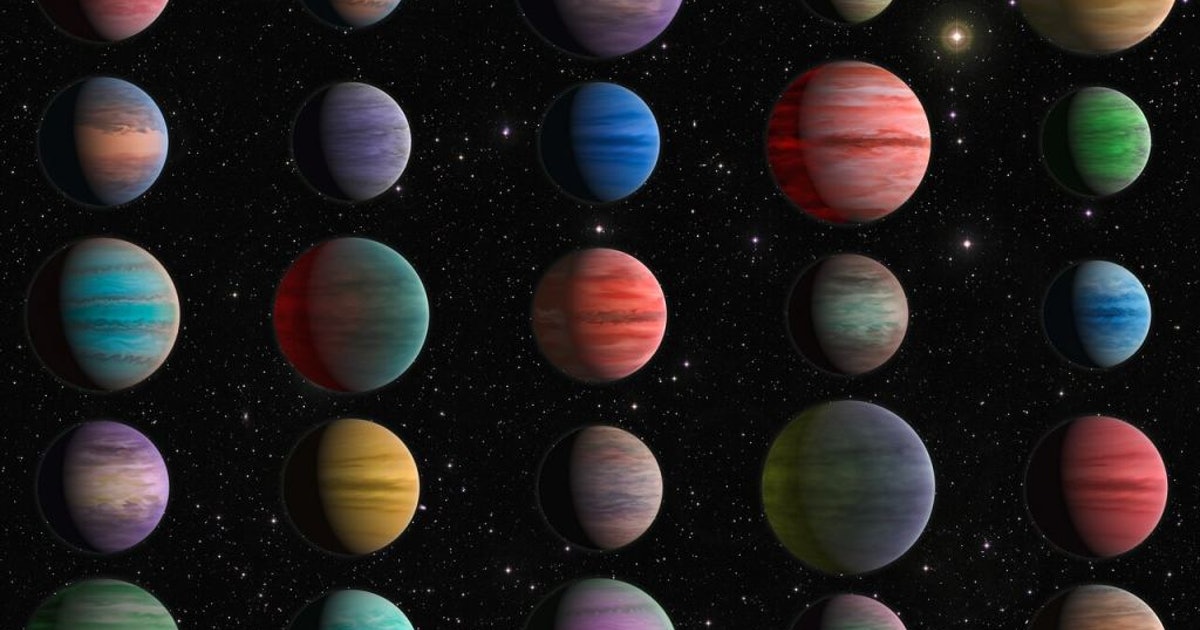
Why astronomers are obsessed with these “hellish” exoplanets
Hot Jupiters are giant exoplanets — even more massive than Jupiter — but they orbit closer to their star than Mercury. When they were first discovered, hot Jupiters were considered oddballs, since we don’t have anything like them in our own Solar System. But they appear to be common in our galaxy. As exoplanets go, they are fairly easy to detect, but because we don’t have an up-close experience with them, there are still many unknowns.
A new study used archival data from the Hubble and Spitzer space telescopes to study this class of giant gas exoplanets and undertook one of the largest surveys ever of exoplanet atmospheres. The researchers said they employed high-performance computers to analyze the atmospheres of 25 hot Jupiters using data from about 1,000 hours of telescope observations. Their findings, published in the Astrophysical Journal Supplement Series, help to answer several long-standing questions about hot Jupiters.
“Our paper marks a turning point for the field,” said co-author Dr. Billy Edwards, from University College London (UCL), in a press release. “We are now moving from the characterization of individual exoplanet atmospheres to the characterization of atmospheric populations.”
The international team of astronomers said they combined two techniques — studying information from transits — where the planet passes in front of its star — and eclipses — when the planet passes behind its star. The tools they created were open-source and have now been made available to researchers around the world.
While we already know the conditions on hot Jupiters are hellish, the new research found that the night and day sides of hot Jupiters are very different from each other, with temperatures plunging by hundreds of degrees from day to night. They found that on average, there was a 1,000 K difference.
They also found that many hot Jupiters have thermally inverted atmospheres, where the upper atmosphere has temperatures that increase with altitude, exactly opposite to Earth’s atmosphere. The research team said this appears to be caused by the presence of metallic elements, such as titanium oxide, vanadium oxide, and iron hydride, which absorb the star’s light, heating up the atmosphere.
They also found hot Jupiters contain less water than expected in their atmospheres, which suggests they formed differently than planets with abundant water.
“Many issues such as the origins of water on Earth, the formation of the Moon, and the different evolutionary histories of Earth and Mars, are still unsolved despite our ability to obtain in-situ measurements,” said lead author Dr. Quentin Changeat, also from UCL. “Large exoplanet population studies, such as the one we present here, aim at understanding those general processes.”
More than 5,000 exoplanets have been discovered, but there are atmospheric data for only about 80, mostly from Hubble and Spitzer. The James Webb Space Telescope, which is undergoing commissioning in space, will have the study of exoplanet atmospheres as one of its areas for priority observation. JWST should be ready to start making observations this summer (2022.)
This article was originally published on Universe Today by Nancy Atkinson. Read the original article here.
Hot Jupiters are giant exoplanets — even more massive than Jupiter — but they orbit closer to their star than Mercury. When they were first discovered, hot Jupiters were considered oddballs, since we don’t have anything like them in our own Solar System. But they appear to be common in our galaxy. As exoplanets go,…
Hot Jupiters are giant exoplanets — even more massive than Jupiter — but they orbit closer to their star than Mercury. When they were first discovered, hot Jupiters were considered oddballs, since we don’t have anything like them in our own Solar System. But they appear to be common in our galaxy. As exoplanets go,…